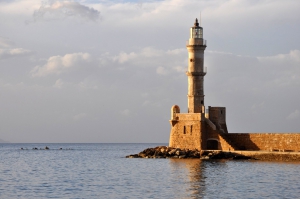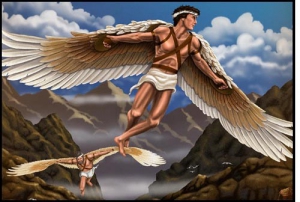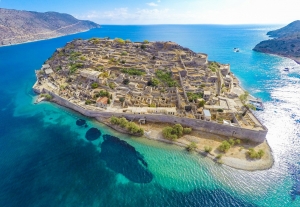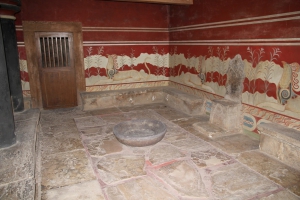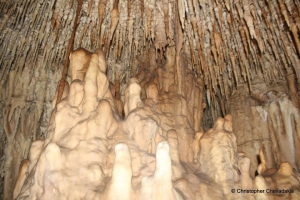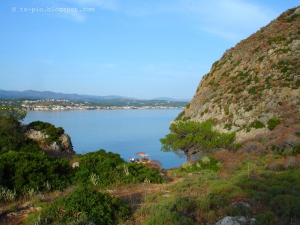The lighthouse at the old harbor of Chania is the most recognizable part of the city, posing at all travel books of Crete. The story of the lighthouse starts a long ago, although its present form dates back since the Egyptian Occupation of Crete (in the early 19th century).
Cronus sired several children by Rhea: Hestia, Demeter, Hera, Hades, and Poseidon, but swallowed them all as soon as they were born, since he had learned that he was destined to be overcome by his own son as he had overthrown his own father. But when Zeus was about to be born, Rhea sought Gaia to devise a plan to save him, so that Cronus would get his retribution for his acts against Uranus and his own children. This, Rhea gave birth to Zeus in Crete, handing Cronus a rock wrapped in swaddling clothes, which he promptly swallowed.
Daedalus was a resourceful and very talented Athenian artist and inventor. Many people believe that he was a real person that was later mythified. The name Daedalus derives from the greek verb "daedalo" which means "work with skill”. He is told to have discovered several well-known tools such as saw, ax, plumb line, drill, masts and figure heads of ships and pottery wheel.
Spinalonga is a small island located at the entrance of Elounda lagoon and north of the Gulf of Mirabello. It has an area of 85 acres and its maximum height is 53 meters. The history of the island still inspires awe. It has been a Venetian fortress, a castle colony, a rebel refuge, a place of exile for lepers, a communication link with Cairo during the Second World War.
Knossos was the most important city on Crete before the Roman Era and the center of the first brilliant European civilization, the Minoan. The palace of King Minos is the most visited archaeological site in Crete with more than 1.000.000 visitors per year.
The beautiful Gorge of Kato Zakros (or the gorge of the Dead) starts in a short distance from Ano Zakros, nearly 100km southeast of St. Nicholas, and ends at Kato Zakros. The beauty of the landscape, the historical importance of the gorge and its accessibility, attract many visitors every year.
Τhe cave of Gerani is one of the most important and most beautiful caves in the prefecture of Rethymno and in whole Crete. It is located 7 km west of Rethymnon, at the location "Kamari" and close to the beach of Gerani. The cave was accidentally discovered on March 15, 1969 during construction works for the modern highway.
The island of Agioi Theodoroi or Thodorou and located just opposite of the beach of Platanias in Chania, just half a mile northern. The history of the island and its ecological importance in preserving the protected species of the Cretan wild goat, make this small dot on the map very important.











